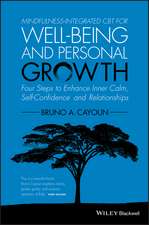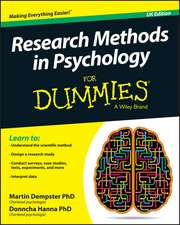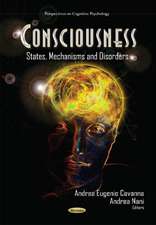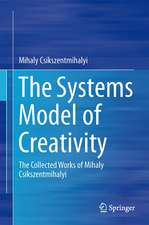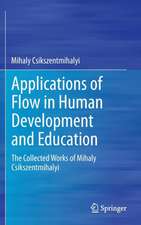Psychology and the Aesthetics of the Built Environment
Autor Arthur E. Stampsen Limba Engleză Paperback – 3 dec 2010
This book answers those questions with a solid, logical theory of environmental aesthetics, empirical evidence covering 277 studies, 41,000 respondents and 12,000 stimuli, and seven case histories showing how the theory can be applied to actual aesthetic decisions. The book proposes a unified protocol for measuring the magnitude of aesthetic impacts. It also applies that protocol to 94 specific findings which span a very wide range of issues.
| Toate formatele și edițiile | Preț | Express |
|---|---|---|
| Paperback (1) | 1384.02 lei 6-8 săpt. | |
| Springer Us – 3 dec 2010 | 1384.02 lei 6-8 săpt. | |
| Hardback (1) | 1416.79 lei 6-8 săpt. | |
| Springer Us – 30 sep 2000 | 1416.79 lei 6-8 săpt. |
Preț: 1384.02 lei
Preț vechi: 1687.82 lei
-18% Nou
Puncte Express: 2076
Preț estimativ în valută:
264.92€ • 287.85$ • 222.67£
264.92€ • 287.85$ • 222.67£
Carte tipărită la comandă
Livrare economică 21 aprilie-05 mai
Preluare comenzi: 021 569.72.76
Specificații
ISBN-13: 9781441950017
ISBN-10: 144195001X
Pagini: 344
Ilustrații: XIV, 327 p.
Dimensiuni: 155 x 235 x 18 mm
Greutate: 0.53 kg
Ediția:Softcover reprint of the original 1st ed. 2000
Editura: Springer Us
Colecția Springer
Locul publicării:New York, NY, United States
ISBN-10: 144195001X
Pagini: 344
Ilustrații: XIV, 327 p.
Dimensiuni: 155 x 235 x 18 mm
Greutate: 0.53 kg
Ediția:Softcover reprint of the original 1st ed. 2000
Editura: Springer Us
Colecția Springer
Locul publicării:New York, NY, United States
Public țintă
ResearchDescriere
Recent legislative trends in the United States, the United Kingdom, and many other countries now require accurate and efficient assessment of environmental aesthetics. Most of this assessment is currently undertaken using traditional design judgment, but when the powers of the government are used to enforce policy the scope of the aesthetic evaluation requires consideration of questions such as `What concepts will aesthetic decision makers need to perform their intended function?', `How can they obtain the information they need?', and `What is currently known about environmental aesthetics?'.
This book answers those questions with a solid, logical theory of environmental aesthetics, empirical evidence covering 277 studies, 41,000 respondents and 12,000 stimuli, and seven case histories showing how the theory can be applied to actual aesthetic decisions. The book proposes a unified protocol for measuring the magnitude of aesthetic impacts. It also applies that protocol to 94 specific findings which span a very wide range of issues.
This book answers those questions with a solid, logical theory of environmental aesthetics, empirical evidence covering 277 studies, 41,000 respondents and 12,000 stimuli, and seven case histories showing how the theory can be applied to actual aesthetic decisions. The book proposes a unified protocol for measuring the magnitude of aesthetic impacts. It also applies that protocol to 94 specific findings which span a very wide range of issues.
Cuprins
Preface. 1. Existing Conditions and Issues. 2. Theory. 3. Reliability of Scientific Methods. 4. A Psychological Protocol for Design Review. 5. Case Histories. 6. New Concepts, Findings & Opportunities. 7. Epilog. 8. References. 9. Index.
Recenzii
`...unique character of this excellent book... engaging and informative volume... This volume is very good at many different levels. It is a terrific introduction to the important aspects of the general scientific method, providing an excellent case example of how to approach a very complex subject and parse it using scientific methodology. This is an important book for anyone involved in design review at any level, as it presents what seems to be revolutionary approach to better design review that is publicly justifiable and will by all apparent data providemore aesthetically pleasurable buildings. ...provides a remarkable example of how to use a multi-representational approach to communicate complex ideas. Stamps employs ... variations to make his points in a clear fashion... The chapter summaries are informative ... over 300 interesting references.' Psychological Reports 2000




